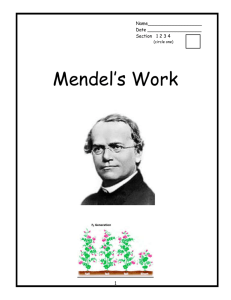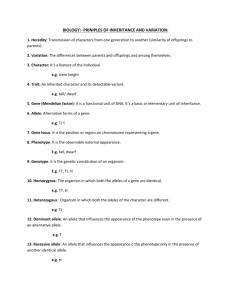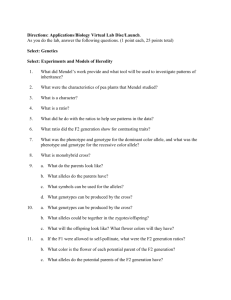Chapter 11-1 Notes 5th Period, you need these!
advertisement
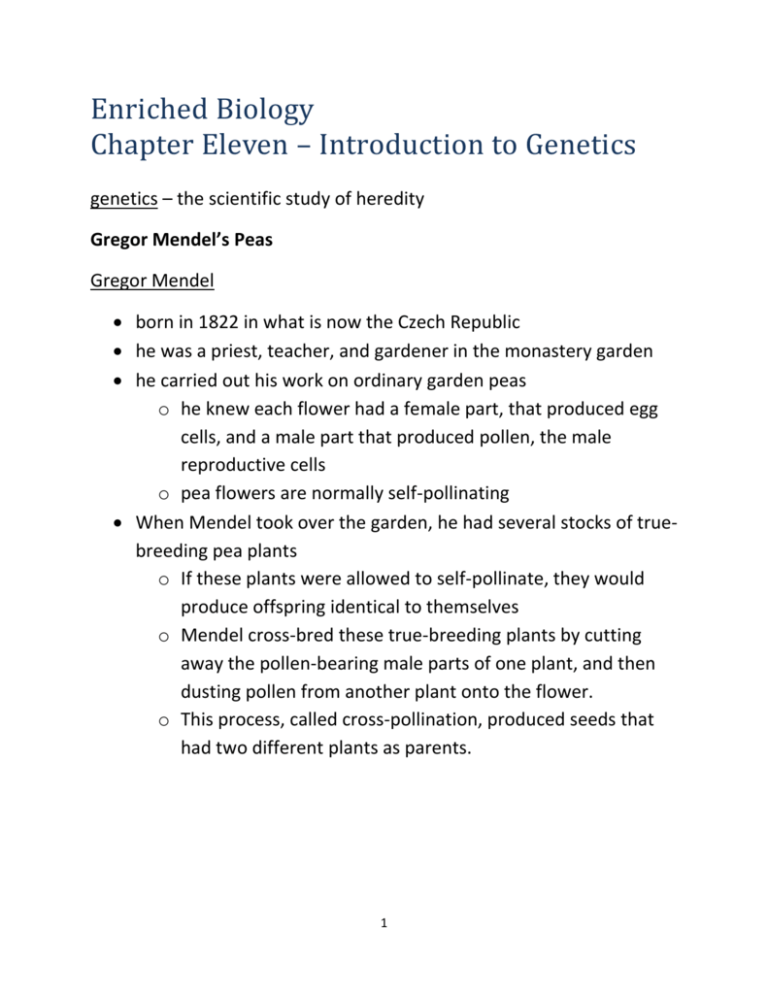
Enriched Biology Chapter Eleven – Introduction to Genetics genetics – the scientific study of heredity Gregor Mendel’s Peas Gregor Mendel born in 1822 in what is now the Czech Republic he was a priest, teacher, and gardener in the monastery garden he carried out his work on ordinary garden peas o he knew each flower had a female part, that produced egg cells, and a male part that produced pollen, the male reproductive cells o pea flowers are normally self-pollinating When Mendel took over the garden, he had several stocks of truebreeding pea plants o If these plants were allowed to self-pollinate, they would produce offspring identical to themselves o Mendel cross-bred these true-breeding plants by cutting away the pollen-bearing male parts of one plant, and then dusting pollen from another plant onto the flower. o This process, called cross-pollination, produced seeds that had two different plants as parents. 1 Genes and Dominance Mendel studied seven different pea plant traits (see page 264) o trait – a specific characteristic that varies from one individual to another Mendel crossed plants with different forms of the same traits o The original pair of plants are called the P (parental) generation, and the offspring are the F1, or “first filial” generation. o The offspring of crosses between parents with different traits are called hybrids. To Mendel’s surprise, all of the offspring had the character of only one of the parents, as shown in figure 11-3. Mendel drew two conclusions: o biological inheritance is determined by factors that are passed from one generation to the next. Today, these chemical factors are called genes. Different forms of the same gene are called alleles. o his second conclusion is the principle of dominance o The principle of dominance states that some alleles are dominant and others are recessive. o An organism with a dominant allele for a particular form of a trait will always exhibit that form of the trait. o An organism with a recessive allele will only exhibit that form when the dominant allele for the trait is not present. 2 Segregation Mendel wondered if the recessive alleles disappeared, or were they still presenting the F1 plants? He crossed two F1 plants, and found that the traits controlled by the recessive alleles had reappeared. o Roughly 1/4th of the offspring exhibited the recessive trait Explaining the F1 Cross Mendel assumed that a dominant allele had masked the corresponding recessive allele in the F1 generation. However, the trait controlled by the recessive allele showed up in some of the F2 plants. Somehow, the allele for shortness had been separated from the allele for tallness o He called this segregation o He suggested that the alleles for tallness and shortness in the F1 plants segregated from each other during the formation of sex cells, or gametes. Key Point: When each F1 plant flowers and produces gametes, the two alleles segregate from each other so that each gamete carries only a single copy of each gene. Therefore, each F1 plant produces two types of gametes – those with the allele for tallness and those with the allele for shortness. 3
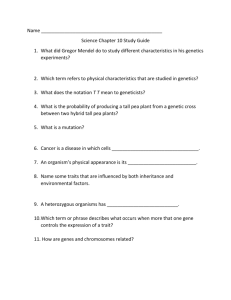

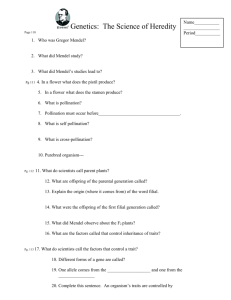
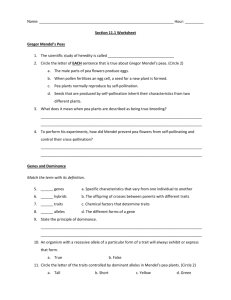
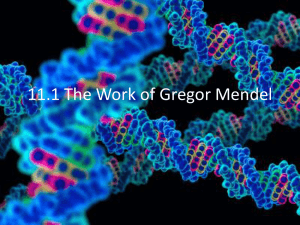


![Biology Chapter 3 Study Guide Heredity [12/10/2015]](http://s3.studylib.net/store/data/006638861_1-0d9e410b8030ad1b7ef4ddd4e479e8f1-300x300.png)

